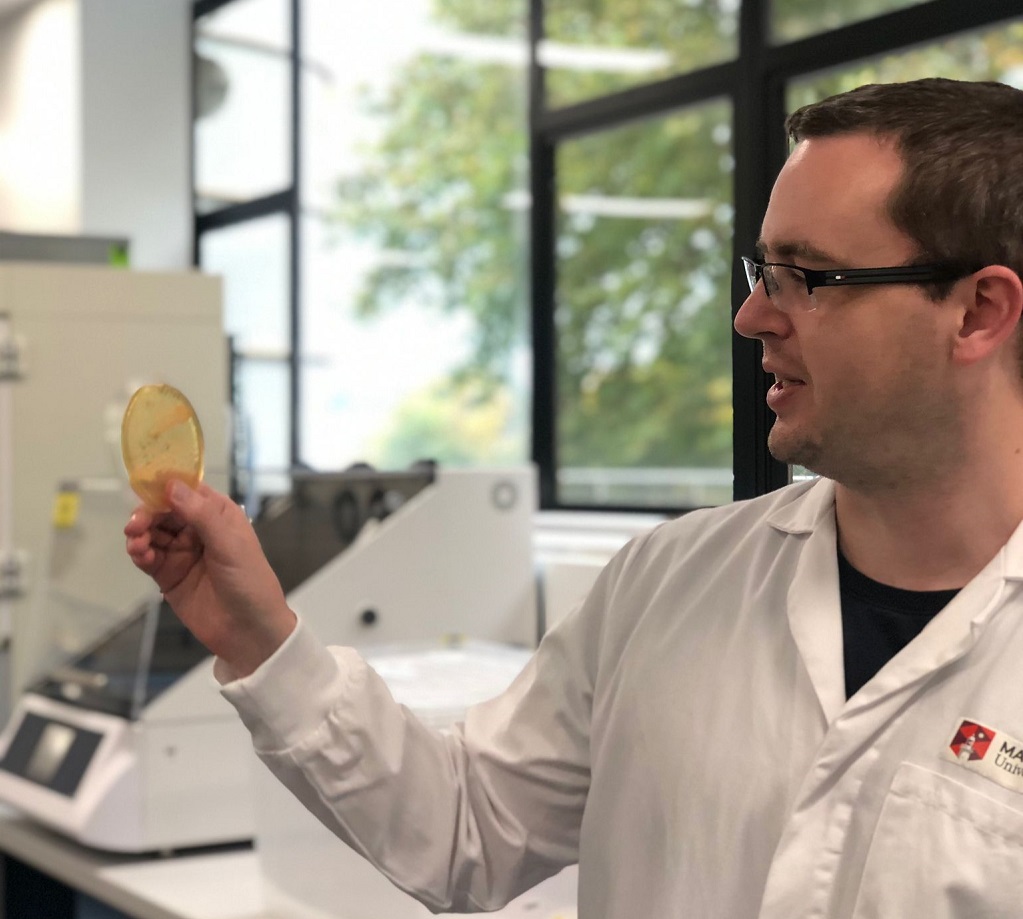Researcher Dr Roy Walker. Image courtesy Macquarie University
Synthetic biologists have outlined a future vision for how winemakers could have greater certainty over their vintages – and create technology with benefits beyond with the world of wine.
The art and science of winemaking could be taken to new levels of precision and creativity with developments in the world of synthetic biology.
A new article in Nature Food describes a vision where winemakers could dial in their own novel aromas and other unique characteristics through engineered wine yeast communities.
Co-authors Dr Roy Walker and Professor Sakkie Pretorius, of the ARC Centre of Excellence in Synthetic Biology at Macquarie University, see the fermentation vessel as a perfect microcosm of the microbial interactions that shape life on our planet.
“We set ourselves the task of exploring the hypothetical challenges and applications of engineered yeast communities in the context of a wine fermentation vessel,” the co-authors said.
“For over 7000 years humans have harnessed the natural microbial biota of grape, vine and fermentation vessel to produce wine.
“Inventiveness in winemaking begins in the vineyard and continues with the winemaker’s careful conducting of characteristics to realise the grape’s potential.
“However, despite the beneficial vintages that diverse microbial communities bring to wine, the wine microbiome brings challenges to the winemaker with predicting the outcome of fermentation.
“Some vintages, therefore, are simply better than others.”
Despite being many years away from current industry technology, in their vision, winemakers would be given a set of plug-and-play tools to encourage certain attributes.
Walker said that many technical challenges still remain before such a vision could be realised, where wine yeast exists as an interlinked microbial community, with each member performing defined roles.
This includes predicting the behaviour of microbial communities in the rich conditions of grape must, and the fact that one organism will usually outcompete another when competing for the same resource.
“The future winemaker will have the creative freedom to identify the optimal blend of starter cultures, both natural and synthetic, to produce a unique blend of aromas and attributes,” according to the authors.
In the shorter term, however, it’s more likely that semisynthetic wine communities would be introduced to combat problems created by spoilage organisms like the wine spoilage yeast Brettanomyces (Dekkera) bruxellensis, which is also responsible for the ‘smelly horse blanket’ aroma.
As such yeasts are reportedly becoming increasingly resistant to sulphites, new means are required to control such spoilage organisms.
In the fermentation vessels of the future, the cast of characters are described as the “Dirty Dozen” and the “Magnificent Seven”, whose performance would be directed so that desirable yeasts can outcompete undesirable microbes.
A further possibility the authors explore in the article is control engineering, a discipline that seeks to correct aberrant behaviour, such as altitude control in space rockets In this context, biosensors may relay information on the fermentation process, either triggering human intervention or self-correcting the imbalance.
Despite the sci-fi nature of these technologies, Walker says that it is important visualise their development for the potential it opens up with new medicines and biofuels.
“Once we further our understanding into the ‘dark matter’ of microbial communities, we can help to uncover new approaches in biotechnology,” he said.
“Wine fermentation represents an ideal model for the study microbial communities. By sharing the burden of tasks between individuals, we can program microbes to produce novel and complex compounds.
“Ultimately, we scientists can help achieve a better future when we learn from the winemaker and the ancient art of winemaking.”
Are you a Daily Wine News subscriber? If not, click here to join our mailing list. It’s free!





















